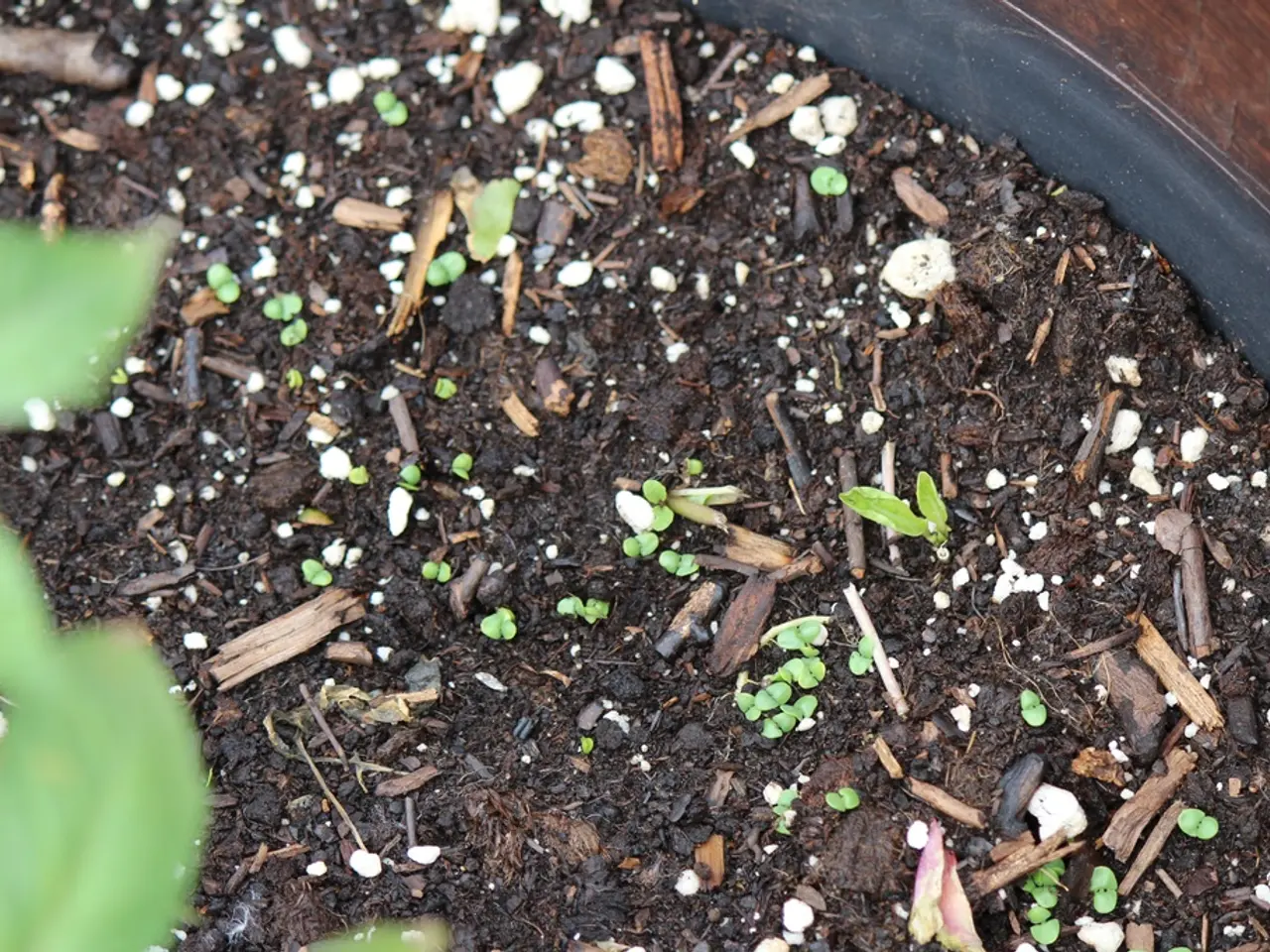Strategies for crafting optimal soil for a thriving garden:
In this guide, we delve into the different types of soil, how to amend them, and how to prepare the best soil mix for a thriving garden. Good soil is essential for healthy plant growth, whether in garden beds or pots on terraces or balconies.
Clay Soil
Clay soil holds nutrients and moisture but tends to be compacted and poorly drained. To improve its structure and drainage, amendments like gypsum (a calcium mineral that breaks up heavy clay) and lime (which binds particles to enhance soil texture) are beneficial. Avoid adding sand, as it can create a concrete-like mixture. Incorporate organic matter and use green cover crops or living mulches to aerate the soil and boost microbial activity. Tilling wet clay soil should be avoided, as it worsens compaction; instead, allow cover crops and organic matter accumulation to improve porosity over time.
Sandy Soil
Sandy soil drains quickly but has low nutrient and moisture retention. To address this, add high-quality organic matter such as well-rotted animal manures (horse, sheep, chicken, cow) to increase nutrients and moisture-holding capacity. Use organic mulches like aged wood chips, leaf mold, or decomposed seaweed to retain moisture and prevent erosion; avoid fine, light mulches that dry quickly. Regular but moderate organic matter applications are preferred rather than heavy one-time uses.
Loamy Soil
Loamy soil is balanced and fertile but can still benefit from adding well-rotted compost or manure to sustain fertility and structure. Loosen the soil to about 8-10 inches depth and break clods for good root penetration. Raised beds or mounds filled with a mixture of soil, compost, and amendments improve drainage and warmth, benefiting many crops like potatoes.
Ideal Potting Mix for Container Gardening
Creating a potting mix for container gardening is essential for healthy plant growth. A quality potting soil often contains inert expanded materials like vermiculite or perlite to improve aeration and water management. Compost and organic matter are critical; mixes can also use composted sawdust or chipped bark (rotted until black) for good structure. A recommended mix might be about two parts rotted bark or sawdust to one part compost. Reuse old potting soil mixed with cured compost and starter fertilizer in subsequent seasons to maintain nutrients.
By following these practices, you can create the ideal growing environment for your plants, leading to healthier, stronger, and more productive plants. Minimize the use of chemicals in soil and opt for natural alternatives like horticultural oils, insecticidal soaps, or organic pest repellents, as these do not harm beneficial soil organisms. The texture of the soil, including the proportion of sand, silt, and clay particles, affects the soil's ability to drain water and retain nutrients.
In summary, amending different soil types and preparing ideal potting mixes for container gardening involve tailored approaches based on the soil's texture and requirements. These practices promote healthy root development, ideal moisture retention, aeration, and nutrient availability, ensuring vigorous plant growth in both garden beds and containers.
[1] Soil Amendments for the Home Garden [2] Raised Beds and Mounds [3] Container Gardening [4] Composting [5] Organic Fertilizers
- Invest in online resources for learning about soil amendments for a home garden, such as [1] "Soil Amendments for the Home Garden".
- Balcony and terrace gardening may thrive with succulent plants that prosper in organic potting soil, following the ideal mix guidelines for container gardening discussed in [3].
- A lifestyle that embraces home-and-garden pursuits like gardening contributes to a healthier local ecosystem by promoting the use of organic materials and natural fertilizers, like the ones mentioned in [4] and [5].
- In your outdoor garden, loamy soil, when amended with well-rotted compost or manure as suggested in [3], can support a diverse range of plants, including vegetables.
- To care for container plants on your balcony, it's important to provide appropriate drainage in the pots, and using organic matter like those described in [3] can help improve the soil structure.
- Beyond the terrace or balcony, the vegetable garden in your backyard can also benefit from amendments like gypsum and lime, especially for clay soil as discussed in [Clay Soil].
- In your own garden, do not forget the crucial role of soil in fostering a thriving ecosystem; learn about how to prepare the best soil mix for a thriving garden, as outlined in the introductory text.
- For nurturing your outdoor garden, opt for sustainable practices like living mulches or cover crops, as they help boost microbial activity and improve soil structure, as discussed in [Sandy Soil].




